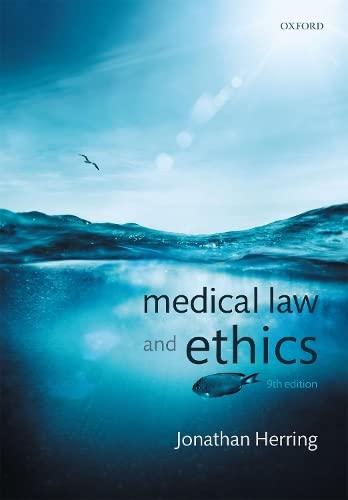Question
Detailed explanation Law knowledge February 28, 2010 $6,923,927 20 Rocky Mountain Chocolate Factory Balance Sheet As of February 28, 2010 Assets Liabilities and stockholders' equity
Detailed explanation
Law knowledgeFebruary 28, 2010 $6,923,927 20 Rocky Mountain Chocolate Factory Balance Sheet As of February 28, 2010 Assets Liabilities and stockholders' equity Current assets Liabilities Cash and cash equivalents $3,743,092 Current liabilities Accounts receivable, less allowance for doubtful accounts 4,427,526 Accounts payable $877,832 Notes receivable, current 91,059 Accrued salaries and wages 646,156 Inventories 3,281,447 Other accrued expenses 946,528 Deferred income taxes 461,249 Dividends payable 602,694 Other 220,163 Deferred income 220,938 Total current assets $12,224,536 Total current liabilities $3,294,148 Property and equipment, net $5,186,709 Deferred income taxes 894,429 Other Assets Total liabilities $4,188,577 Notes receivable, less current portion $263,650 Equity Goodwill, net 1,046,944 Common stock $180,808 Intangible assets, net 110,025 Additional paid-in capital 7,626,602 Other 88,050 Retained earnings 6,923,927 Total other assets $1,508,669 Total stockholders' equity $14,731,337 Total Assets $18,919,914 Total liabilities and stockholders' equity $18,919,914 21 Case 4: Fraud Sc
Rocky Mountain Chocolate Factory Income Statement For period ended February 28, 2010 Revenues Sales $22,944,017 Franchise and royalty fees 5,492,531 Total revenues 28,436,548 Costs and expenses Cost of sales, excluding depreciation and amortization of $698,580 14,910,622 Franchise costs 1,499,477 Sales and marketing expenses 1,505,431 General and administrative expenses 2,422,147 Retail operating expenses 1,756,956 Depreciation and amortization 698,580 Total costs and expenses 22,793,213 Operating income 5,643,335 Other income (expenses) Interest income 27,210 Other, net 27,210 Income before income taxes 5,670,545 Income tax expense (2,090,468) Net income $3,580,077 Basic earnings per share $0.60 Diluted earnings per share $0.58 Weighted average common shares outstanding 6,012,717 Dilutive effect of employee stock options 197,521 Weighted average common shares outstanding, assuming dilution 6,210,238 19 Rocky Mountain Chocolate Factory
50. I cannot seem to start a valuation. In order to calculate E + D = VA (FCF; WACC) I need the WACC and in order to calculate the WACC I need D and E. Where should I start?
51. Does the book value of the debt always coincide with its market value?
52. Is the Free Cash Flow (FCF) the sum of the equity cash flow and the debt cash flow? 53. What is NOPAT (Net Operating Profit After Tax)?
54. What is EBITDA (Earnings Before Interest, Taxes, Depreciation and Amortization)?
55. I do not understand the meaning of Working Capital Requirements. I think it should be similar to Working Capital (Current Assets - Current Liabilities). Am I right?
56. Why can we not calculate the required return (Ke) from the Gordon-Shapiro model [P0 = Div0 (1+g) / (Ke - g)] instead of using the CAPM? As we know the current dividend (Div0) and the current share price (P0), we can obtain the growth rate of the dividend from the formula g = ROE (1-p)/(1 - ROE (1-p)), p being the payout.
57. Assume I calculate g as ROE (1-p)/(1-ROE (1-p)) and the Ke from the CAPM. I replace both values in the formula PER = (ROE (1+g) - g)/ROE (Ke-g) but the PER I obtain is totally different from the one I get by dividing the quotation of the share to the earnings per share. Is it possible to interpret that difference as an overvaluation or undervaluation of that share on the market?
58. I was assigned a valuation of the shares of a pharmaceutical laboratory. Which valuation method is more convenient?
59. I need to know how to value a company well, but I cannot clearly see the valuation process of a company starting from its past income statements. What are the systematical steps I need to take? Firstly, I think I should elaborate the provisional statements for the following fiscal years and then calculate the cash flows, discount them at the present moment (with a discount factor), add the terminal value to it and the difference between the book net value and the market value of intangibles. I really need that these steps be methodical and easy to understand so I can use them as a guide when valuing a company. 60. What is a 3 x 1 Split
Step by Step Solution
There are 3 Steps involved in it
Step: 1

Get Instant Access to Expert-Tailored Solutions
See step-by-step solutions with expert insights and AI powered tools for academic success
Step: 2

Step: 3

Ace Your Homework with AI
Get the answers you need in no time with our AI-driven, step-by-step assistance
Get Started


